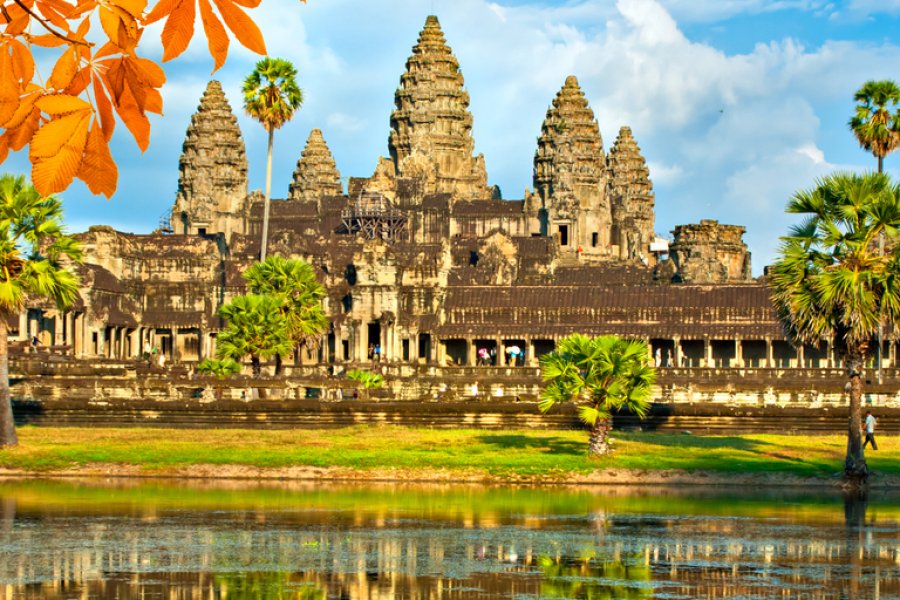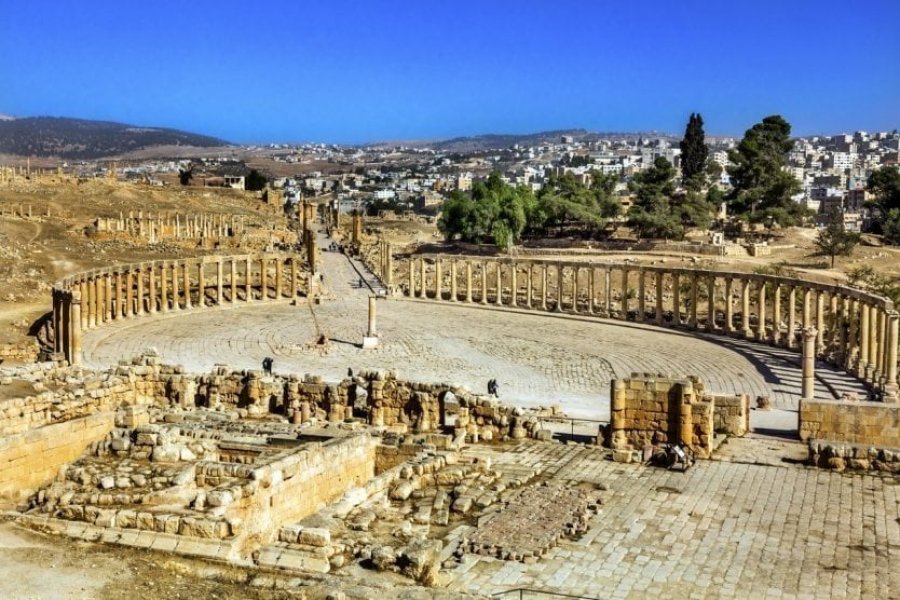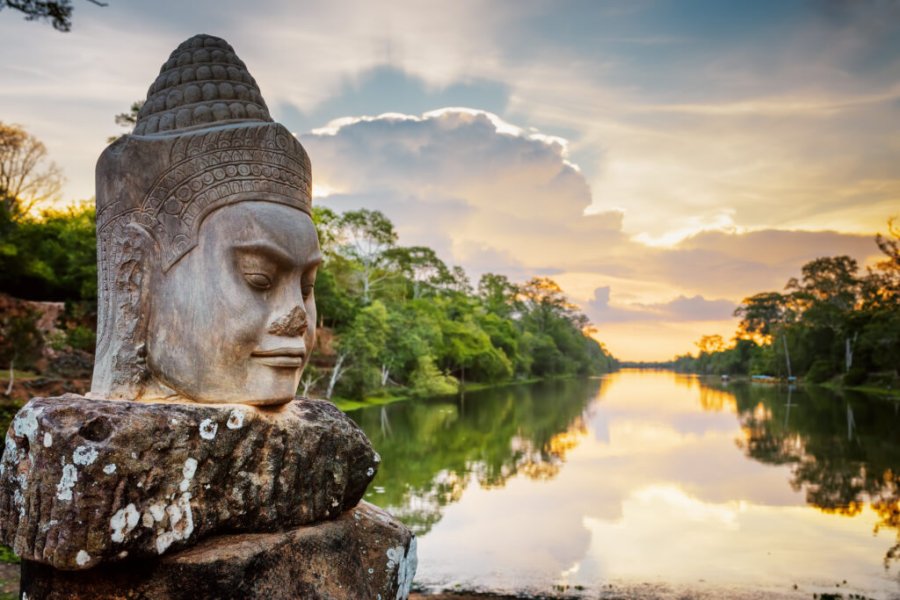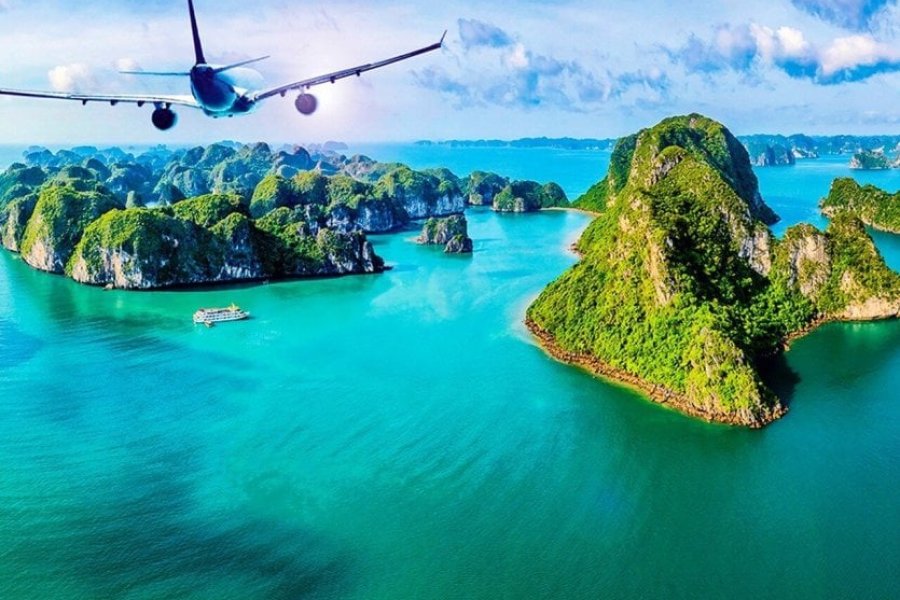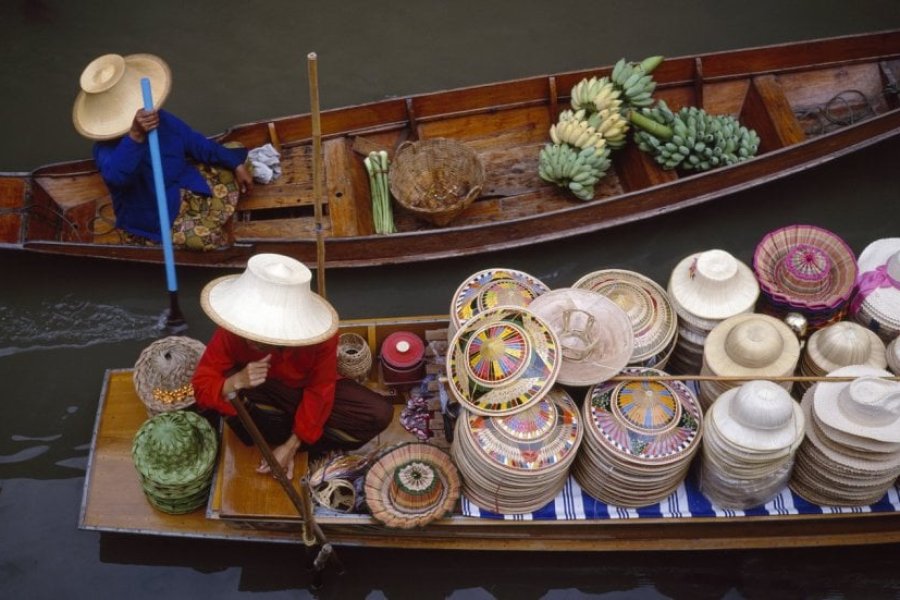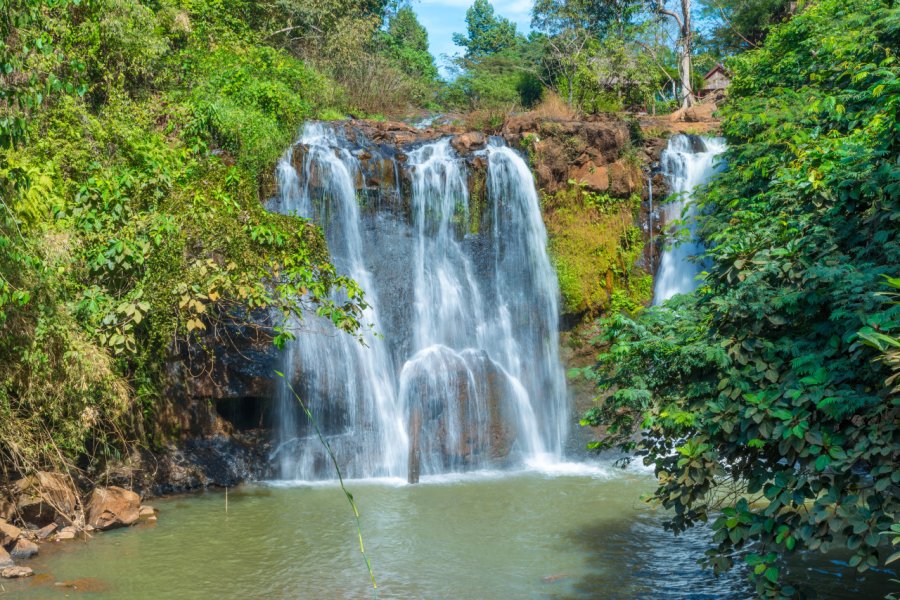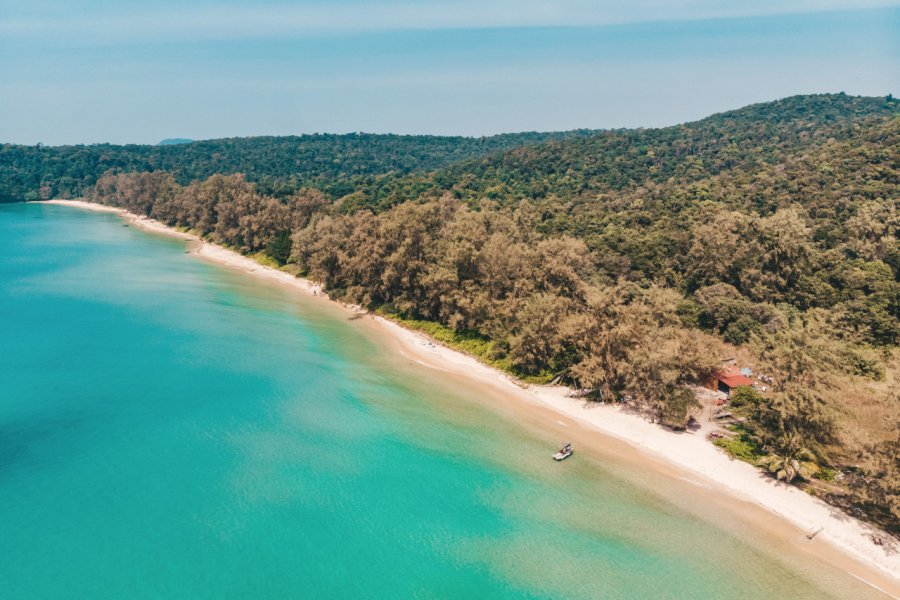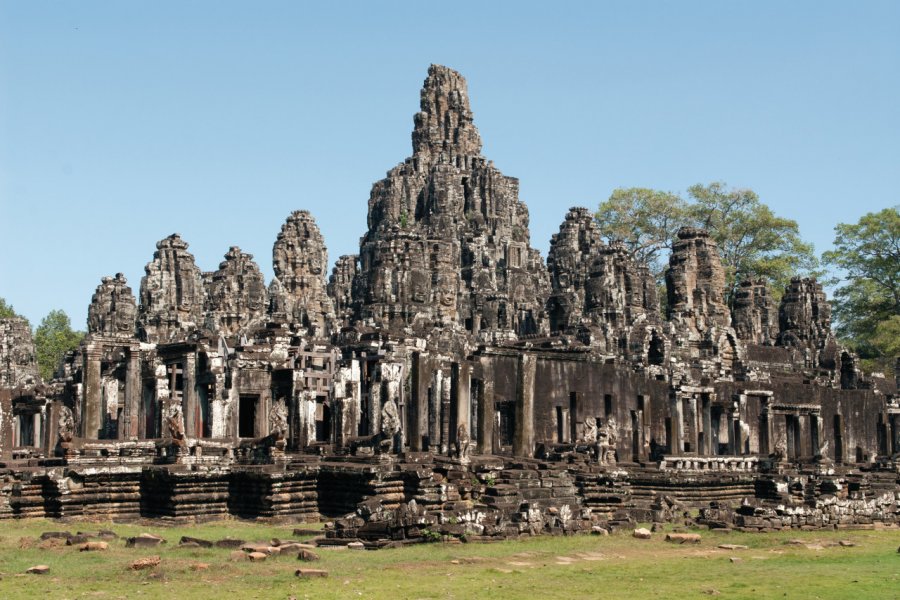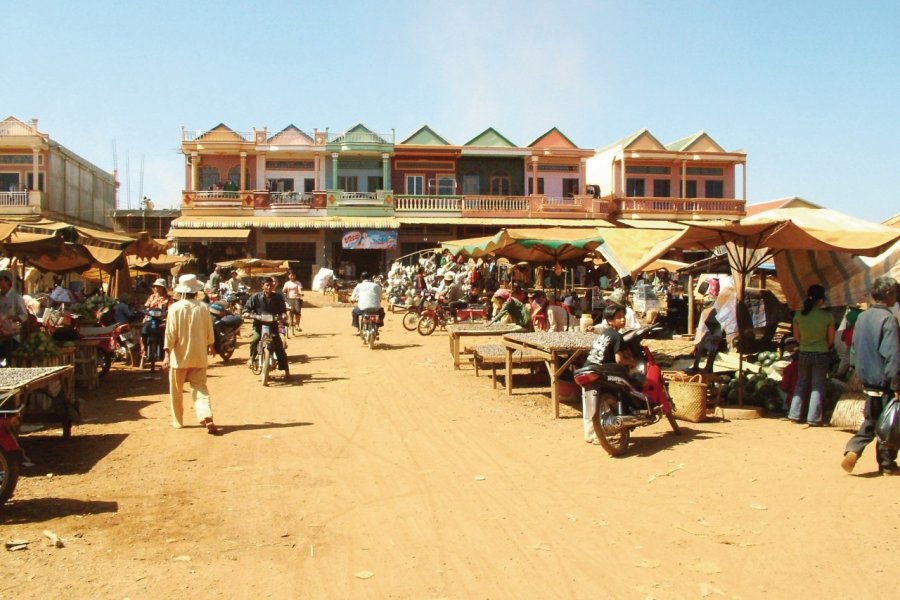Travel guide Cambodia
Cambodia is still a little-known destination for tourists, but it has gradually opened up to visitors following the end of the Khmer guerrilla war and the easing of tensions born of thirty years of conflict. Cambodia's exceptionally rich architectural heritage, including the famous Angkor temples listed as a UNESCO World Heritage Site, has become accessible again. But due to the relatively recent development of tourism, hotel infrastructures are still approximate, transportation is not always very efficient outside of Siem Reap, Phnom Penh and Sihanoukville... But in the end, you will remember above all the magic of destinations such as Ratanakiri and Mondolkiri, the sunset at the temple of Eastern Mebon or the superb landscapes of rice fields during a hike. So many wonders that you will be able to discover without any problem by following the indications of the tourist guide on Cambodia. And if some travelers wish to combine this trip with other destinations such as Laos, Vietnam or even Thailand, take the time to discover Cambodia, an extraordinary Asian country!
What to see, what to do Cambodia?
-
Book an activity
-
Customized travel
- The most beautiful cities Cambodia
When to go Cambodia ?
The high tourist season in Cambodia is from November to February. There are few tourists in November, but then it gets very bad, especially in Angkor where you can find the rush of the eve of the European holidays... The worst is by far the Chinese New Year when all Asia converges on Angkor. The advantage is that this period is relatively cool, especially at night and in places of a certain elevation: Ratanakiri, Mondolkiri, Kirirom. The average tourist season in Cambodia goes from March to May and corresponds to the dry season, it is the least pleasant period, it is very hot, with a high tourist attendance in Angkor. This low season is the best time to go to Cambodia to observe the wildlife. The low season in Cambodia is from June to October. It usually rains very heavily only at the end of the day and cities like Phnom Penh are paralyzed for a few hours. The rest of the time, it is warm.
Suggested addresses Cambodia
Travel Cambodia
-
Find a hotel
-
Car Rental
-
International e-SIM package
-
Find a local agency
Le Cambodge est un pays de nature et de culture : les temples d’Angkor Wat, bien sûr, mais aussi le Mékong et les rizières lointaines. Découvrir le centre-ville de Phnom Penh mais aussi les abords de villes de province comme Battambang ou Kratie. Les forêts ont beaucoup souffert au Cambodge, mais les régions de Ratanakiri ou de Mondolkiri offrent encore de beaux paysages. Et puis, en fonction du temps disponible, il faut naviguer sur le Tonlé Sap (fleuve et lac) et aller faire un tour sur la côte, entre Kep et Sihanoukville via Kampot. Pour bien organiser un voyage, les premières questions à se poser sont les suivantes : quel type de voyageur êtes-vous, quel genre de voyage voulez-vous faire et comment souhaitez-vous voyager ? Pour les aventuriers les plus en forme, louer une moto est la garantie d'une grande liberté. Pour les autres, le choix des transports en commun ou de la voiture privée se fera en fonction de votre budget.
Find unique Stay Offers with our Partners
How to go Cambodia
How to go alone
Traveling independently throughout Cambodia is within the reach of anyone in good health, provided that certain basic safety rules are followed. However, beware of snatching in the city and roadside mines in the remote northern and northwestern provinces of Cambodia.
How to go on a tour
If you only have a week to spend in the country, it is possible to make an organized trip that will allow you to go to the essential and not miss anything of the must-see of this so beautiful country, from Siem Reap to Phnom Penh passing by the magnificent temples of Angkor, while rubbing shoulders with the warm and welcoming Khmer people.
How to get around
Several domestic flights are available in Cambodia: Phnom Penh-Siem Reap (several daily connections), Siem Reap-Sihanoukville (daily). From the main bus station in Phnom Penh, daily departures to many destinations: Sihanoukville, Siem Reap, Battambang, ... Overall, the buses are comfortable and air-conditioned. You can take the boat for a cruise on the Mekong of course! But also on the two other rivers: the Tonle Sap and the Stung Sangker.
Featured articles Cambodia
Discover Cambodia
To know Cambodia is first to know its history. Cambodian society as it is today is the result of a particular history. It is, on the one hand, the heir to the grandeur of an empire that dominated the region for six centuries, and on the other hand, the collective shock of a bloody dictatorship like no other, the scars of which are struggling to heal. This Southeast Asian country of modest size and nascent economy is struggling to catch up with its Vietnamese and Thai neighbors, and is seeking to join the concert of nations. But an authoritarian regime that seems more interested in staying in power than in looking after the welfare of its people is slowing down this development. Or rather, it is directing it towards the big guys, without benefiting the little guys. It is a country that enjoys a formidable natural wealth, unfortunately in danger, with its immense forests that shelter a rich and diverse fauna and flora
Pictures and images Cambodia
The 12 keywords Cambodia
1. #Angkor Wat
Not only is it the most famous temple in the city of Angkor, it's also the symbol of the entire country. Claimed by all political movements since the country's independence, it harks back to the heritage of an empire that was once the undisputed force of the entire region. Its unmistakable silhouette is at the center of the national flag.
2. #Campaign
Who knows, maybe your fondest memories of Cambodia won't be of the Angkor temples or the capital Phnom Penh, but simply of the countryside! And that wouldn't be surprising. The little villages with their houses built on stilts are as pretty as can be, and observing the daily life of the inhabitants is a fascinating activity.
3. #Water

Cambodia is a water country. Agriculture throughout the country is largely dependent on the monsoons and the vagaries of Lake Tonle Sap, the river of the same name, and its big brother the Mekong. Villages are built on stilts along the shores of the lake, and the population lives off its resources. Not to mention the coastline and its islands.
4. #Khmer
Traditional name for the Cambodian people. We often speak of Khmer culture in reference to the days of Angkor Wat. Since then, history has muddied the waters, and the name Khmer Rouge party was merely a reference to a glorious past. Cambodia's current population is a mixture of Khmer, Viet, Thai and Chinese peoples.
5. #Lotus

The beautiful lotus flower blooms morning and night. Pink or white, the lotus is considered the sacred flower of the Buddhist religion and is used for offerings inside temples. Its shape is a recurring theme in Khmer art and architecture, and if you pay close attention, you'll see it everywhere.
6. #Mountain
While the vast majority of Cambodia is an immense plain around the central Tonlé Sap lake, it also boasts some of the region's most fascinating mountain ranges, notably the Cardamom and Elephant ranges in the south-west, and the Dangrek in the north. The eastern part of the country is dominated by the high plateaus of Ratanakiri and Mondolkiri.
7. #Rain
Warm and invigorating, it's welcome when it punctuates a day of sweltering heat. Whereas in our part of the world it is sometimes synonymous with sadness, here it is beneficial, symbolizing the end of drought and the fertility of crops. Contrary to popular belief, traveling in Cambodia during the rainy season is rarely a constraint.
8. #Red
A dramatic episode in the country's recent history, Pol Pot's Khmer Rouge regime decimated the country in the late 70s, perpetrating the most violent genocide in recorded history. Millions died. Traumatized for decades to come, the Cambodian people, who seek only to forget, are trying to heal their wounds.
9. #Temples
Angkor is no longer in the limelight, yet other magnificent temples can be visited throughout the country. To mention only a few, Sambor Prei Kuk, near the city of Kompong Thom, or Preah Vihear, in the north of the territory, are magnificent architectural achievements. And they have the advantage of welcoming only few tourists.
10. #Tiger

After a long decline, the species was officially declared extinct in Cambodia in 2007. Since then, awareness of its importance to the ecosystem has led to a reintroduction program, spearheaded by the government and several NGOs. If all goes well, tigers could be back in Cambodia in a few years' time!
11. #Tourism
The recent pandemic has considerably reduced the number of tourists visiting Cambodia, and Angkor in particular. With the opening of the borders, there's no doubt that the site will soon be attracting crowds again. To avoid the hordes and find some semblance of tranquility, visit early, or visit late, but avoid rush hour.
12. #Tuk-tuk

For short trips, tuk-tuk are the best - and often the only - means of transport! Compared to their Thai neighbors, Cambodian tuk-tuk drivers are much less aggressive commercially, and more willing to offer competitive rates. Provided you're willing to negotiate, of course.
You are from here, if...
You constantly feel the irresistible urge to smile. All the time, to everyone and for no apparent reason.
You walk around without rain gear and in flip-flops, even when the skies are looking downright stormy. If it's going to rain, it's going to rain.
You ride a motorcycle, even to cover the 20-meter distance between your home and the noodle shop.
You stay topless, even at dusk, defying the challenge of mosquitoes circling you.
You don't own a watch, your phone doesn't tell the time, and you don't care what time it is anyway.
You only consider your meal complete if you've eaten a bowl of rice with it. A meal without rice is a snack.
You live with your whole family: children, parents, grandparents and sometimes aunts and uncles.
You have only one thing on your mind: helping your fellow man. Friends, family or complete strangers, it doesn't matter.

